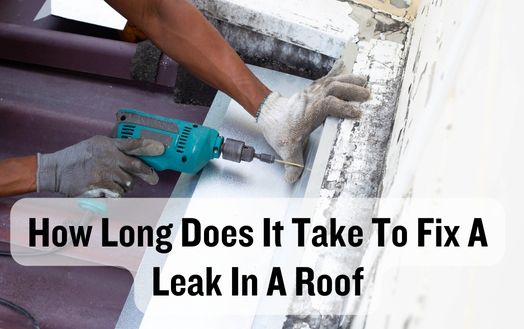
When it comes to fixing a leak in a roof, there are a multitude of factors that come into play. The severity of the leak, the type of roof, and the expertise of the roofing contractor all contribute to the overall time it takes to address the issue.
Additionally, the materials needed for the repair, the access to the leaky area, and the time required for prep work are important considerations.
Furthermore, the removal of damaged materials, the installation of new materials, and the final inspection and testing all play a role in the process. But just how long does it take to fix a leak in a roof? Well, that’s what we’re here to find out. So, grab a cup of coffee and let’s dive into the intricacies of repairing a leaky roof.
Leak severity affects damage and repair urgency. Before fixing roof leaks, assess their severity. A minor leak may only need a patch or sealant, but a major leak could cause extensive damage and require more expensive repairs.
Understanding the severity of leaks is crucial to choosing a solution. An occasional drip may seem harmless, but even the smallest leaks can cause significant damage over time. To prevent roof deterioration and interior water damage, roof leaks must be addressed immediately.
Innovative methods can reduce leak severity. Infrared imaging and moisture mapping can locate and quantify leaks. This targets repairs precisely, saving time and money.
Once the leak’s severity is determined, roof repairs can be made. Applying waterproof sealant or replacing a shingle may fix minor leaks. Major leaks may require roof replacement or section replacement.
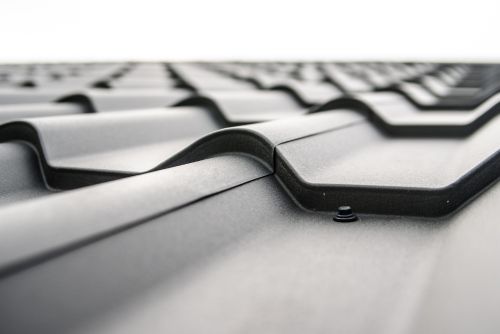
Choosing the right roof leak repair method depends on the type of roof. To fix different roofs, different methods and materials are needed. If your roof has asphalt shingles, you would identify and replace the damaged shingles.
Asphalt shingles are durable and affordable, making them a popular roofing material. They can still leak, especially if they’re old or weathered. Repairing an asphalt shingle roof leak starts with finding the source. Examine the roof for damage like missing or curling shingles.
Replace the damaged shingles after identifying the damage. Using a pry bar and roofing nails, carefully remove the damaged shingles. After removing the damaged shingles, new ones can be installed. To avoid leaks, align and nail the new shingles.
Depending on your roof type, you need a roofing contractor with the skills to fix a leak. Roof repair requires knowledge and innovation. A roofing contractor with leak repair experience can help.
Leak repair is complicated, but a roof repair contractor knows how. They have the knowledge and experience to find and fix the issue. With their expertise, they can evaluate your roof and determine the best leak repair method.
Innovation is key to fixing roof leaks. Professional roofing contractors use cutting-edge methods and materials to fix the problem. They know the options and can recommend the best one for your roof.
When hiring a roofing contractor, choose someone with leak repair experience. Check certifications, licenses, and client reviews. A reliable contractor can handle any roof repair, no matter how complicated.
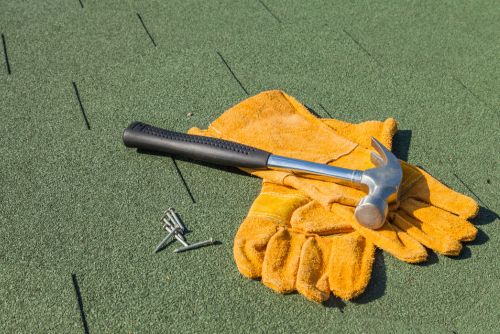
Roof leak repair requires specific materials. Fixing a leaky roof requires speed. Roof repairs are tedious, but with the right materials, they can be done quickly and efficiently. Roof repairs begin with a ladder. This is necessary for safe roof access and damage inspection. A stable ladder ensures safe repair work.
Next, replace damaged roofing materials with shingles or tiles. These materials protect the roof from water and improve its appearance. To ensure longevity, use high-quality, weatherproof materials.
A roofing sealant or adhesive is needed to seal roof gaps and cracks in addition to roofing materials. A watertight seal and leak prevention are achieved. For long-term leak repair and weather resistance, a high-quality sealant is needed.
Repairs require a hammer, nails, and a utility knife. These tools remove damaged materials and secure new ones. They allow precise installation, ensuring a professional repair.
Now that we have roof repair materials, let’s talk about getting to the leak. A successful roofing repair requires access to the leak. Innovative ways to access the area:

To ensure favorable weather for roof leak repair, I checked the forecast. Before starting a roofing repair project, I must consider the weather because I value efficiency and innovation. The weather affects repair success and duration.
You need dry weather to fix a roof leak. Rain, snow, and humidity can slow progress and lower fixing quality. Moisture can make materials stick poorly, causing leaks. Wet weather makes roof climbing harder and increases the risk of accidents.
I scheduled the repair for a clear, sunny day in the best weather. This improves visibility and safety and keeps the roof and its materials dry and ready for repair. Dry conditions allow leak detection and repair without delay.
Weather monitoring technology is used in roofing repair innovation. We can better plan repairs with real-time weather updates and forecasts. We can spot favorable weather windows and avoid unexpected weather changes during repairs with this technology.
Fixing a roof leak quickly requires considering the weather. We can maximize efficiency and ensure a long-lasting fix by ensuring dry, sunny conditions. Technology and innovation help us adapt to changing weather and deliver excellent results to our clients.
The roofing contractor must be available for repair scheduling. Fixing a roof leak requires speed. You want a contractor who can work quickly and efficiently. Here are some roofing contractor availability factors:
You need a reliable, available roofing contractor to fix a roof leak. Consider their availability, flexibility, and promptness to ensure that your roofing repair is completed quickly, allowing you to resume your normal routine without leaks or damage.

After confirming the roofing contractor’s availability, the next step in fixing a roof leak is determining the inspection and assessment time. This is crucial because it helps us assess the damage and create a leak-fixing plan.
Inspection and assessment time depends on roof complexity and leak severity. Sometimes assessing the situation and developing a plan takes only a few hours. In extreme cases, a thorough inspection can take days or weeks.
The roofing contractor will carefully inspect the roof for damage or water entry. They’ll also evaluate the roof’s condition to determine if other repairs are needed.
After the inspection, the roofing contractor will assess the damage and provide a repair timeline. Repairs can be done quickly, but severe leaks can take months to fix and restore the roof.
Remember that rushing inspection and assessment can result in ineffective repairs. To prevent future leaks, thoroughly assess the situation and make the necessary repairs.
A successful roof leak repair plan depends on determining the repair’s complexity. The severity and location of roof leaks, roof structure damage, and roofing material can affect repair complexity. Consider the following to understand repair complexity:
Fixing the leak takes time and resources, so knowing its complexity is crucial. It improves repair timeline estimation and ensures proper materials and methods.
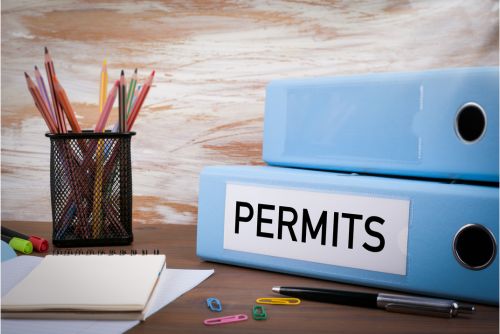
Let’s discuss roof leak repair permits. Legal and regulatory issues must be considered when fixing a leak. Permits and approvals are required to ensure that repairs comply with local building codes.
Determine if a permit is needed before starting repairs. Permit requirements vary by location and repair extent. Contact the local building department or authority to determine job permits and approvals. To avoid legal issues and ensure the repair work meets standards, this step is crucial.
Minor roof repairs may not need a permit if they don’t alter the roof structure. Always check with local authorities to confirm requirements. However, a permit may be needed if the repair work involves major changes, such as replacing a large roof section or altering the roof structure.
Consider the article section’s context when obtaining permits or approvals. The priority is fixing a leak, but legal and regulatory issues must be addressed. By providing contextually relevant information about permits and approvals, readers can understand the repair process and ensure compliance.
Coordination with plumbing and electrical work is crucial for a smooth repair process. Collaboration with these trades can help identify leak causes and ensure a complete fix. Roof leak repairs require coordination with other trades for these reasons:
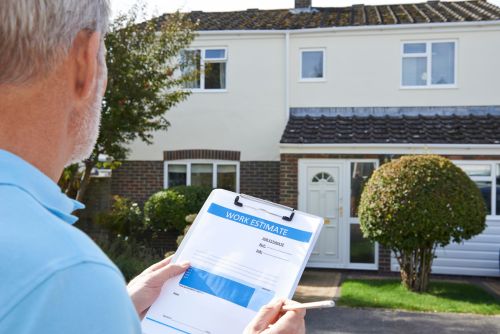
How long does it take to fix a leak in a roof? Before starting repairs, give yourself enough time for preparations. The prep time for fixing a roof leak depends on the damage and complexity of the repair.
Depending on the leak size and accessibility, prep can be done in a few hours. It involves finding the leak, assessing the damage, and gathering the necessary tools and materials. If the leak has been neglected for a long time, it may require more prep work, such as removing shingles, inspecting the structure, and fixing any issues.
Preparation for roof leak repairs typically takes two to five days. Planning and coordinating the repair process takes time, as do physical preparations. Prepare for repairs thoroughly to ensure they’re done correctly and effectively.
Advanced roof repair technologies and methods speed up prep work. Drone roof inspections can quickly and accurately locate leaks. New materials and sealants can also make repairs last longer and require less maintenance.
Damaged roof materials are carefully removed. I need this step to assess the damage and decide how to repair it. Expect these during damaged material removal:
Damaged materials take time to remove, depending on the size and extent of the damage. Minor repairs can usually be done in a few hours, but major damage may take days. By carefully removing the damaged materials, I can lay the groundwork for a successful roof repair and restore your roof to its best condition.
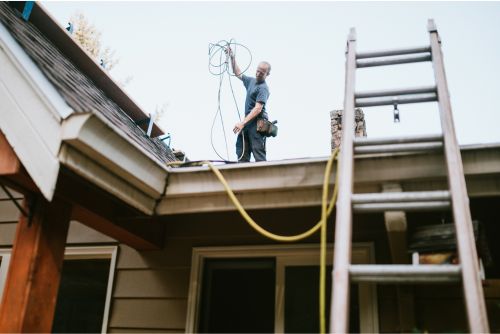
I will replace the roof materials after removing the damaged ones. Fixing the leak and ensuring the roofing system’s longevity require this step. I use cutting-edge installation methods and materials to satisfy an innovative audience.
My first step is to assess the damage and choose the right roof materials. I choose weatherproof shingles, tiles, and metal sheets to prevent leaks. These new materials offer maximum protection and durability, ensuring a long-lasting roofing system.
Next, I carefully installed the new materials. This requires accurate measurements, alignment, and secure fastening. I use the latest installation methods to seamlessly integrate the new materials into the existing structure, creating a watertight barrier.
I consider eco-friendly installation methods and innovative methods. As sustainability becomes more important, I use eco-friendly roofing materials. This improves building energy efficiency and the environment.
A final inspection and testing of the newly installed materials ensures roof repair quality and effectiveness. This step is essential to fixing the leak and waterproofing the roofing system. The final inspection and testing phase includes these steps:
So how long does it take to fix a leak in a roof? It depends on the severity of the leak, type of roof, expertise of the roofing contractor, and materials needed for the repair. Additionally, access to the leaky area and time required for prep work, removal of damaged materials, installation of new materials, and final inspection and testing all contribute to the overall duration.
It’s important to consult with a professional roofing contractor to determine the specific timeline for your roof leak repair.
Sure, I can fix a small leak in my roof by myself. It requires some basic tools and skills.
First, I need to locate the source of the leak, which can be tricky. Once found, I’ll need to seal it with roofing cement or patch it with a roofing repair tape. The process usually takes a few hours, depending on the complexity of the leak. It’s important to prioritize safety and consider hiring a professional if unsure.
Water stains on the ceiling or walls, damp or musty odors, and visible water dripping or pooling are roof leak signs. These signs must be addressed immediately to prevent further damage. As a homeowner, I’ve learned the importance of early detection and action.
Fixing a roof leak depends on the damage and repair complexity. Leak size, roofing material, and accessibility can all affect repair time. A professional roofing contractor can assess the situation and estimate the repair time more accurately.
Sure, I can temporarily patch a roof leak until it’s professionally repaired. It’s important to address the issue as soon as possible to prevent further damage.
By using materials like roofing cement or tarps, I can create a temporary solution that will keep the water out until a professional can fix it permanently. This quick fix will buy us some time until the leak is properly repaired.
Home structural damage can result from roof leaks. Water intrusion weakens beams and rafters, causing rot and decay. Your home’s foundation and stability may suffer over time.
Repairing roof leaks quickly prevents further damage and costly repairs. Regular maintenance and inspections can find and fix leaks before they become major issues.